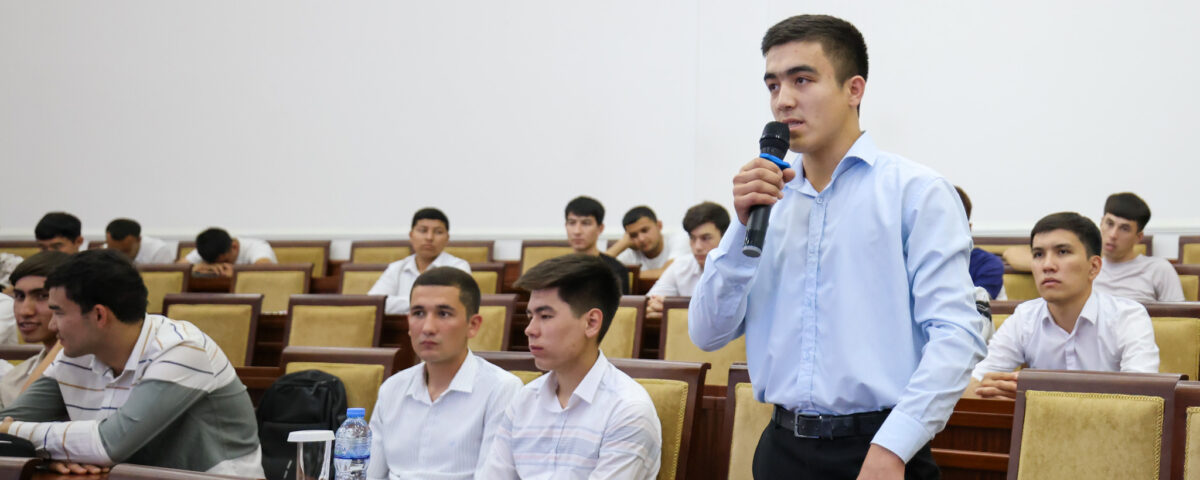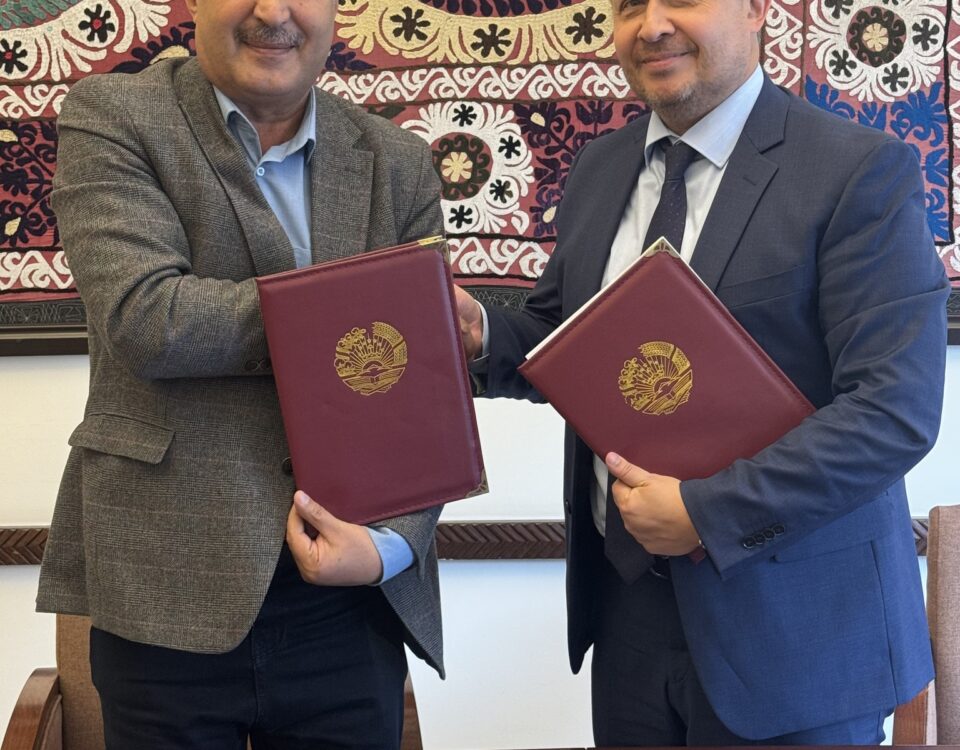
Investors Guide for Renewable Energy projects in KZ (Russian version)

USAID supports climate dialogue: COP-28 and Action Plan for Kazakhstan
What do one of the oldest universities in the U.S. and one of the oldest universities in Central Asia have in common? An agreement to use cutting edge technology to forge a renewable energy path together. The University of Delaware and Tashkent State Technical University have worked together to introduce a new curriculum on green hydrogen to Uzbekistan’s energy specialists.
With over 100 years of history, Tashkent State Technical University (TSTU) has established itself as a leading institution, attracting more than 20,000 students pursuing degrees in fields such as aviation, geology, machinery, electrical engineering, power engineering, and other science, technology, engineering, and mathematics (STEM) disciplines. On the other side of the globe, in 1923, the University of Delaware made a groundbreaking move by initiating the first study abroad program in the United States. Today, the University of Delaware remains at the forefront of global engagement, continuously expanding its legacy. Notably, the university has added a new dimension to its international collaboration through the introduction of a pioneering green hydrogen course.
.jpg?auto=webp)
But what is green hydrogen? It’s part of the global transition to sustainable energy sources to develop a clean and renewable form of hydrogen produced using solar and wind energy. Green hydrogen, produced through the process of electrolysis that separates water into hydrogen and oxygen using renewable energy, represents a crucial clean energy solution and is significantly cleaner than hydrogen produced with fossil fuels. It is already in use by the University of Delaware in batteries that power its buses, with more potential. As countries worldwide embrace this emerging trend, scientists in Uzbekistan, with its abundant solar and wind resources, recognized the significant potential for the growth of green hydrogen within its energy sector and embraced a partnership with this U.S. institution.
USAID’s Power Central Asia Activity supported this university partnership aimed at helping Central Asian countries meet their national and regional priorities in renewable energy. This time, through the American Innovation Center for Central Asia — a knowledge sharing platform established to support energy sector transformation.
“Together, we will contribute to progress and innovation in Uzbekistan’s energy sector and Central Asia,” he said at the official ceremony in Tashkent. “This collaboration will not only expand the knowledge and experience of our professors but also enable them to become catalysts for professional growth in the field of green hydrogen.”
These two universities have worked together for months to develop and implement a new curriculum dedicated to green hydrogen, specifically tailored to meet the needs of Uzbekistan’s energy specialists. This summer marked a momentous occasion, as they came together to present the results to faculty and students, as well as the Ministries of Energy and Education in Tashkent.
The collaborative training session was led by renowned expert, Professor Ismat Shah from the University of Delaware, who shared his wisdom to equip professors and researchers with the knowledge required to integrate the course into the university’s curriculum.
“The proficiently organized training workshop brought together a diverse array of organizations and academic institutions, which left me pleased. The dissemination of knowledge about green hydrogen is imperative, as it will become a necessity in the near future,” shared Professor Shah. His research, focused on designing new materials for water, energy, and environmental applications, distributed power optimization, among others, resulted in over 250 papers published.
.jpg?auto=webp)
“The training was extremely valuable for us as university professors. Ismat Shah shared his research on green hydrogen conducted at the University of Delaware and provided us with invaluable experience that will help us implement such a course at our university,” shared Dilnoza Pulatova, Associate Professor at TSTU’s Department of Alternative Energy Sources. According to her, the training will be the start of their own program.
The transfer of knowledge gained from this training session will prove instrumental in shaping TSTU’s future. By integrating a curriculum focused on green hydrogen, the university will produce highly specialized experts who can drive innovation and spearhead sustainable development initiatives in Uzbekistan.
“The incorporation of the discipline of green hydrogen will play a key role in technologies that meet the requirements of the 21st century for our university, and this curriculum ensures that our students will be prepared for the future, with the knowledge and skills to contribute to the sustainable development of the country,” said Vice-Rector, Ulugbek Mannanov. He emphasized the vast potential and sustainability green hydrogen can offer for Uzbekistan and Central Asia.
.jpg?auto=webp)
This partnership marks a significant milestone in Uzbekistan’s journey towards sustainable energy and reinforces the country’s commitment to embracing clean and renewable technologies. With green hydrogen poised to become a crucial component of the energy landscape, the collaborative efforts between USAID, the University of Delaware, and Tashkent State Technical University will undoubtedly contribute to Uzbekistan’s sustainable development and propel the nation towards a cleaner and brighter future.
“We are deeply grateful to USAID for facilitating this partnership with the University of Delaware,” Vice Rector Ulugbek Mannanov said. “The implementation of a curriculum on green hydrogen, made possible through the collaboration with USAID, signifies further development in the field of preparing professionals with regard to environmental processes.”
Subscribe to USAID Central Asia Exposure to follow more stories.
Похожие
On November 20, 2024, Sara Werth, the new USAID Mission Director to the Kyrgyz Republic, met with Taalaibek Ibraev, the Minister of Energy of the Kyrgyz Republic
Подробнее - On November 20, 2024, Sara Werth, the new USAID Mission Director to the Kyrgyz Republic, met with Taalaibek Ibraev, the Minister of Energy of the Kyrgyz Republic




